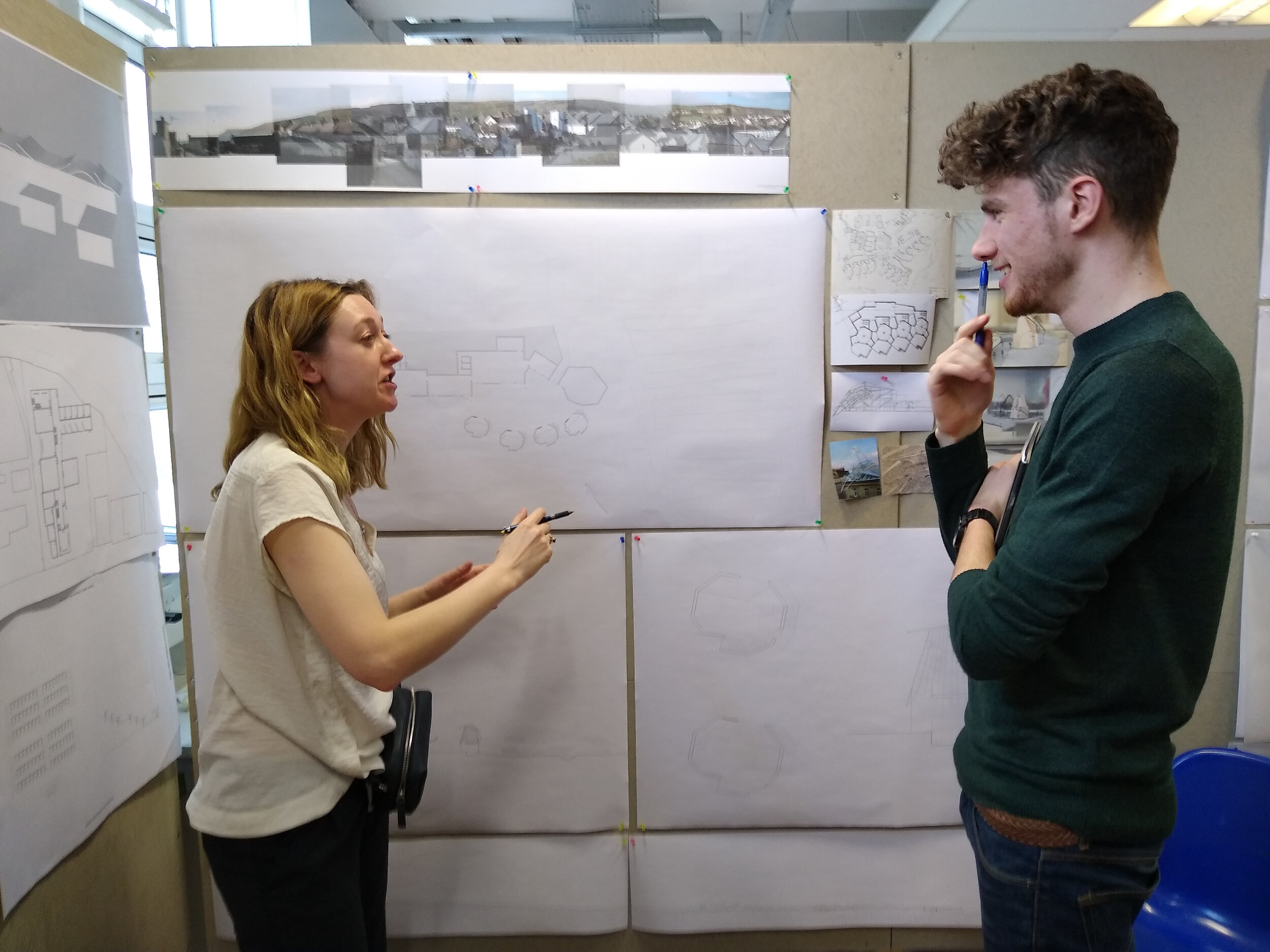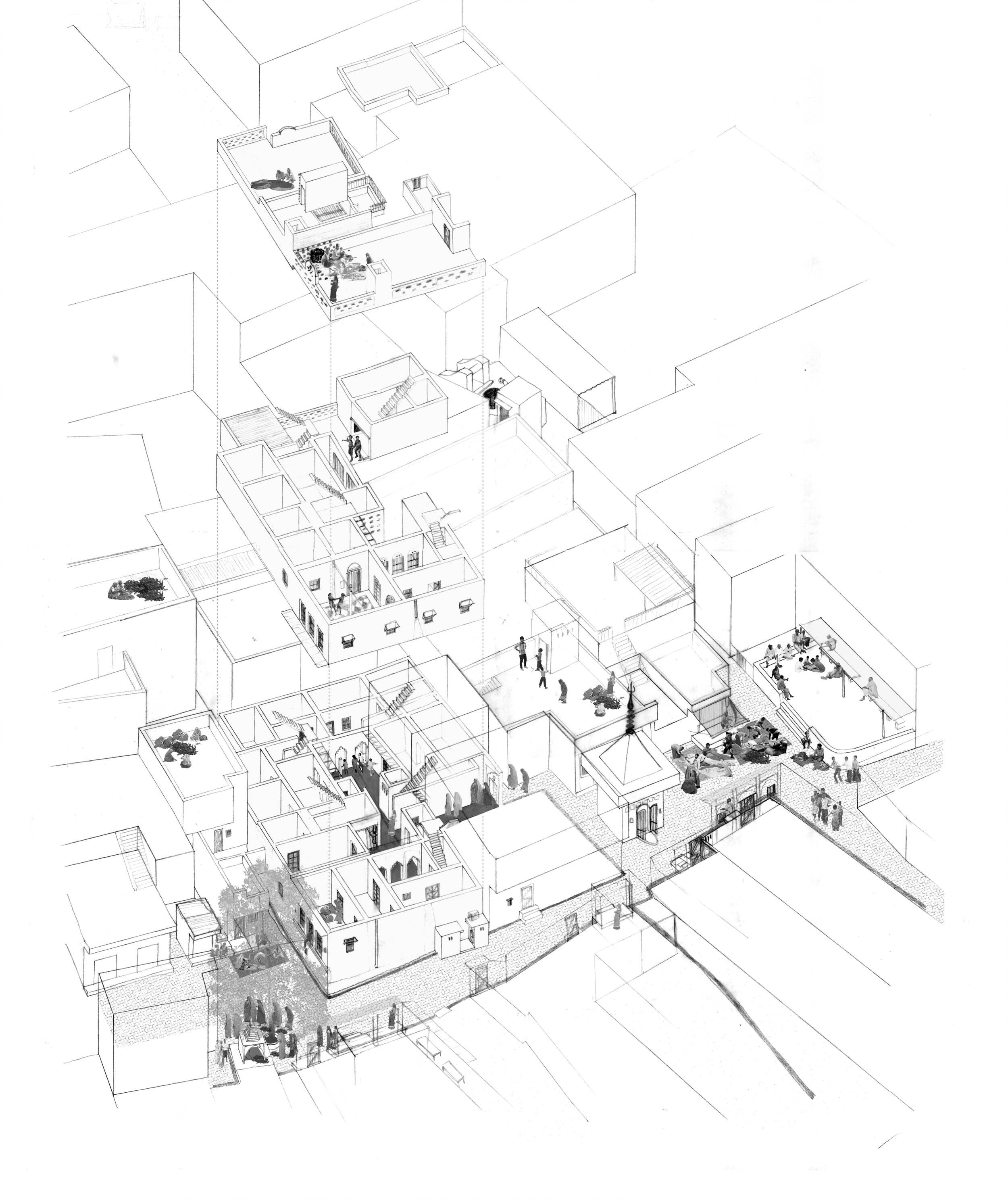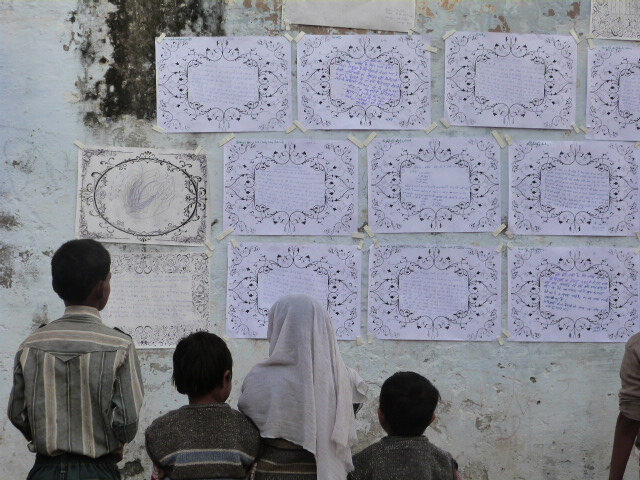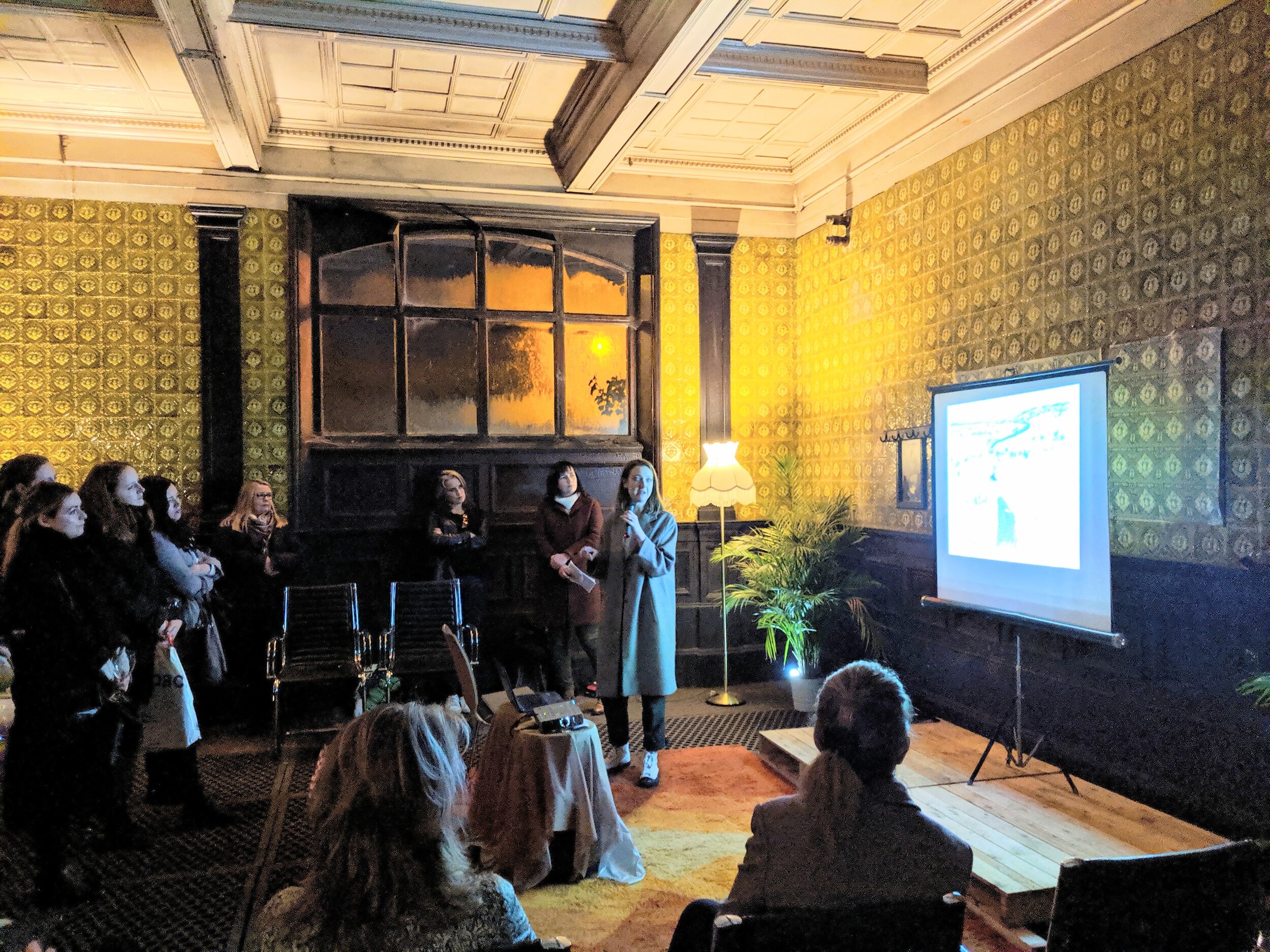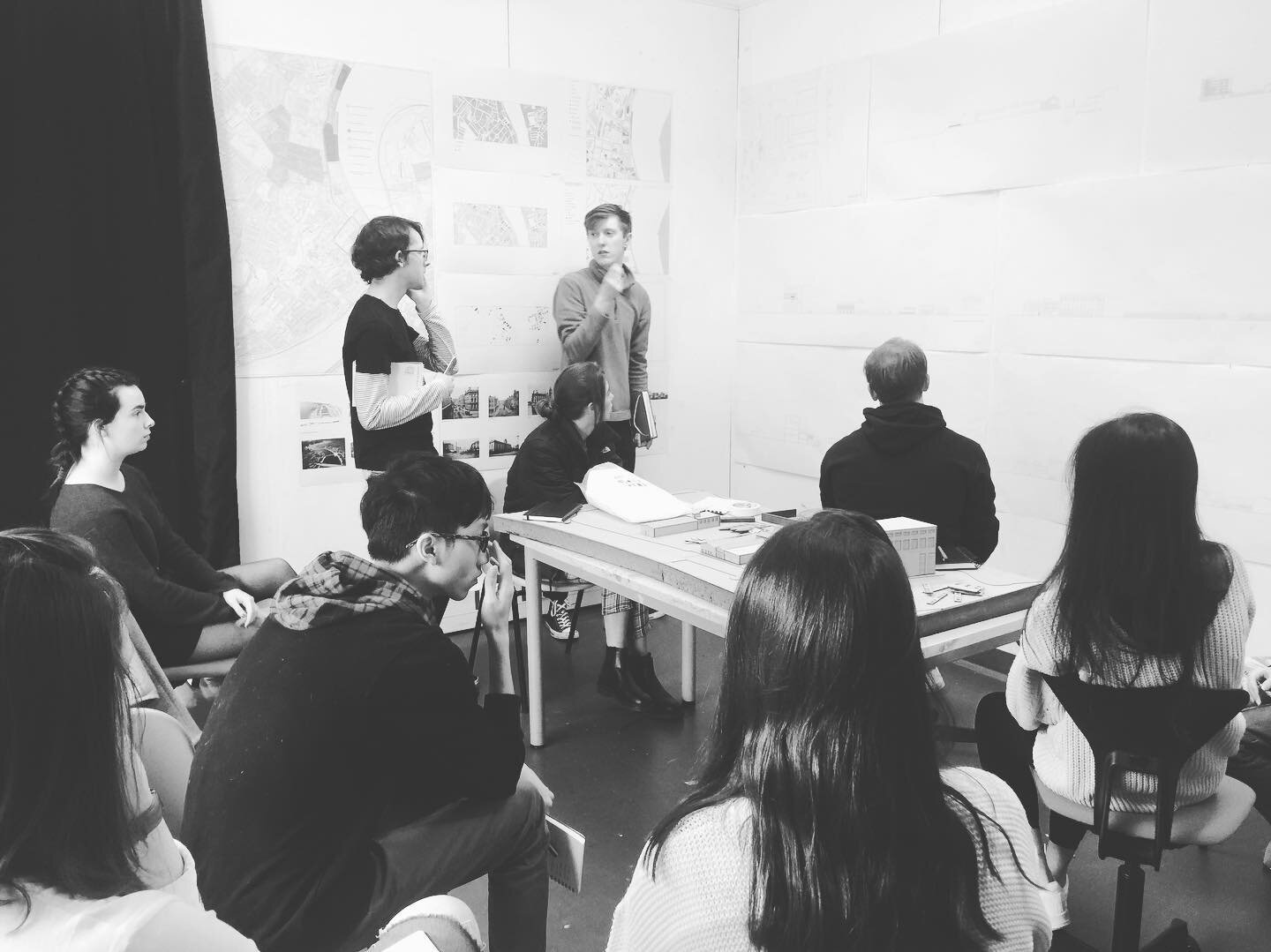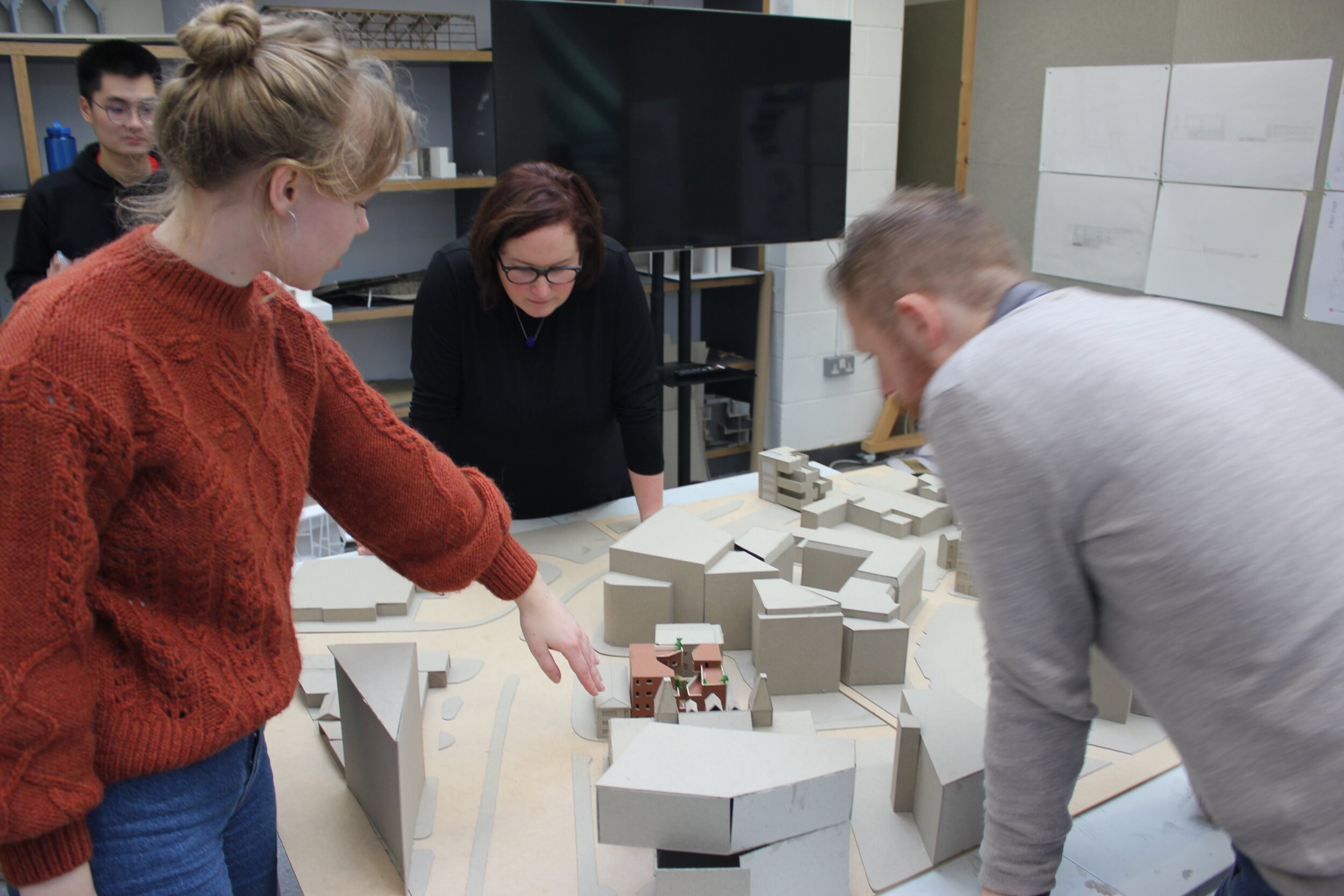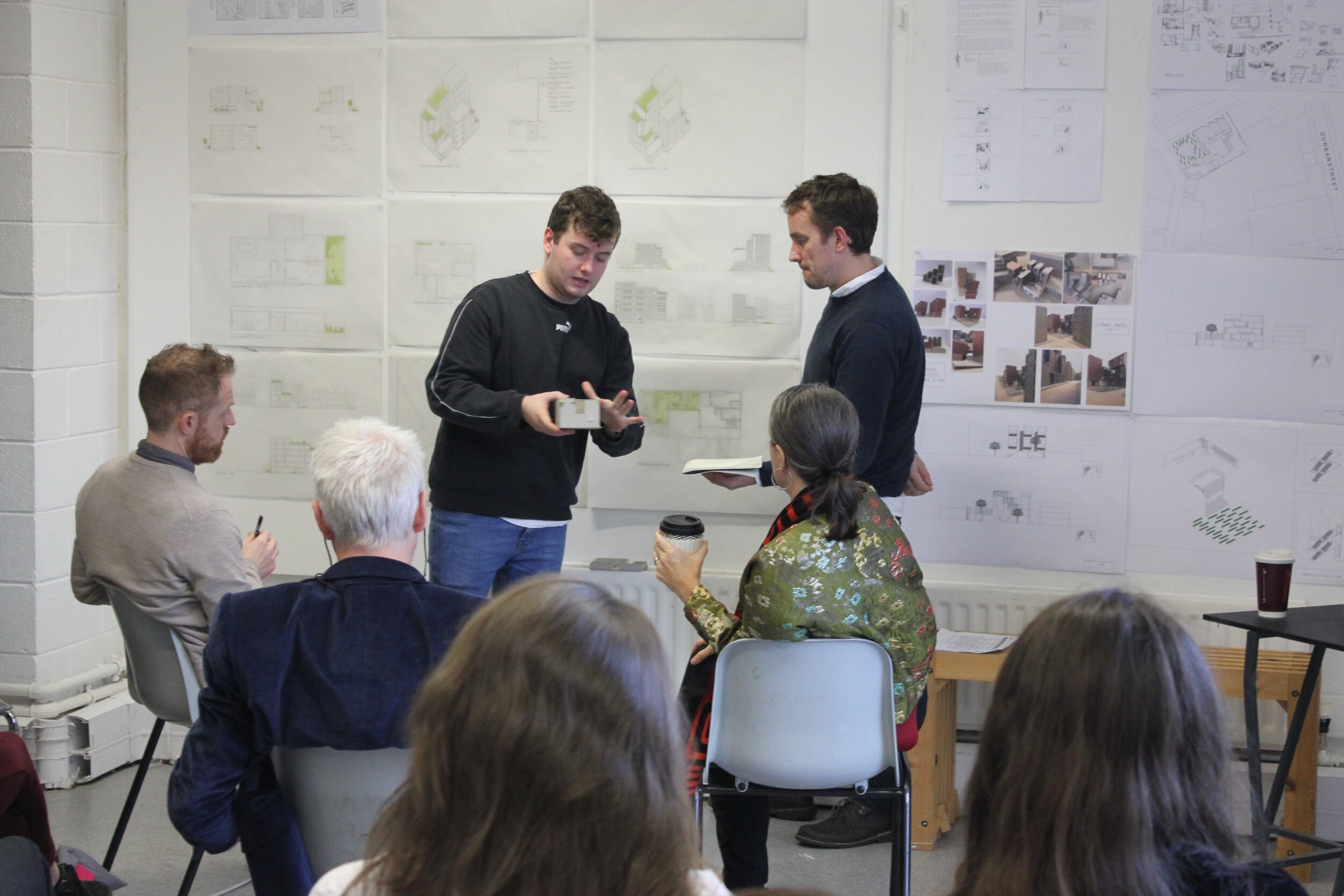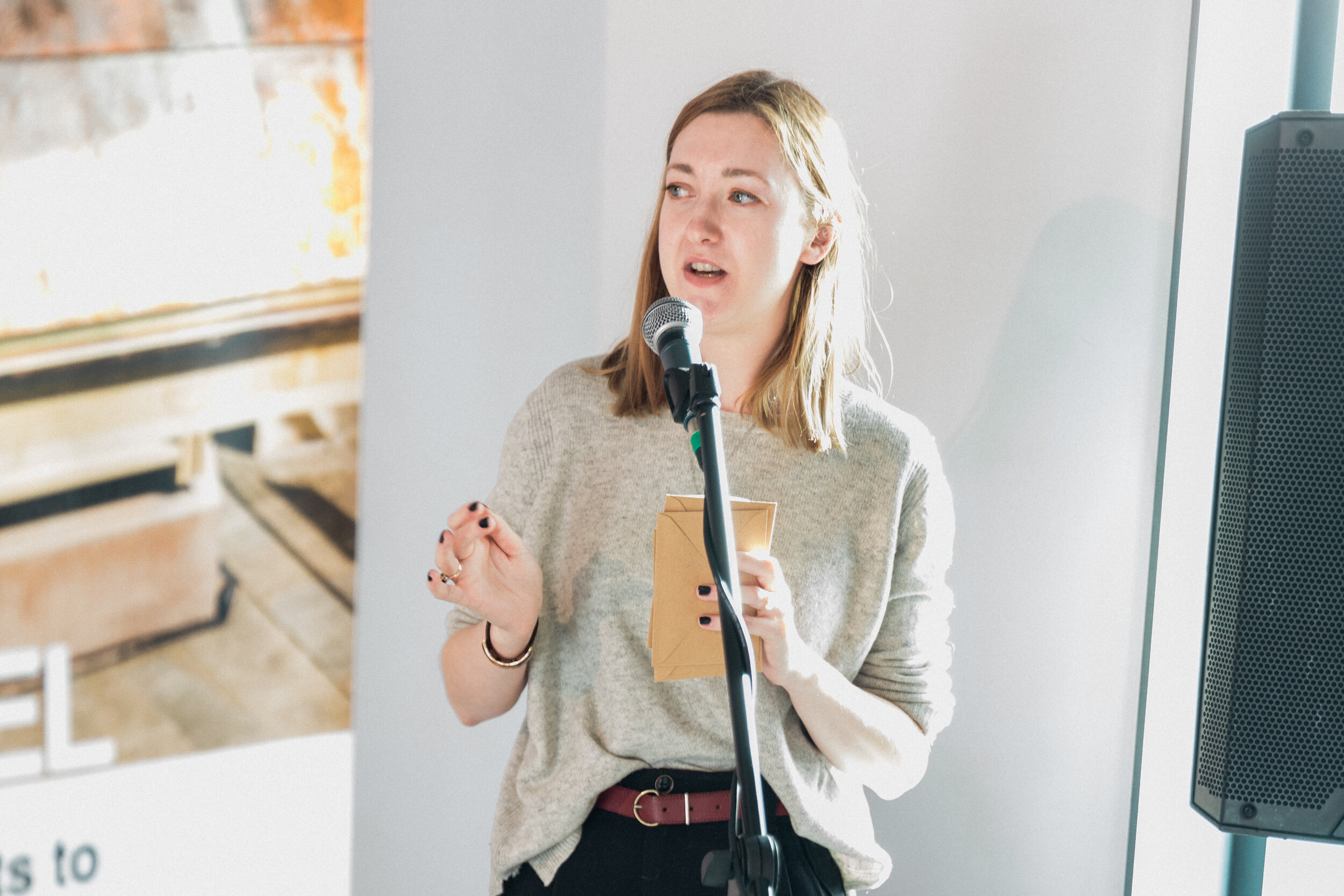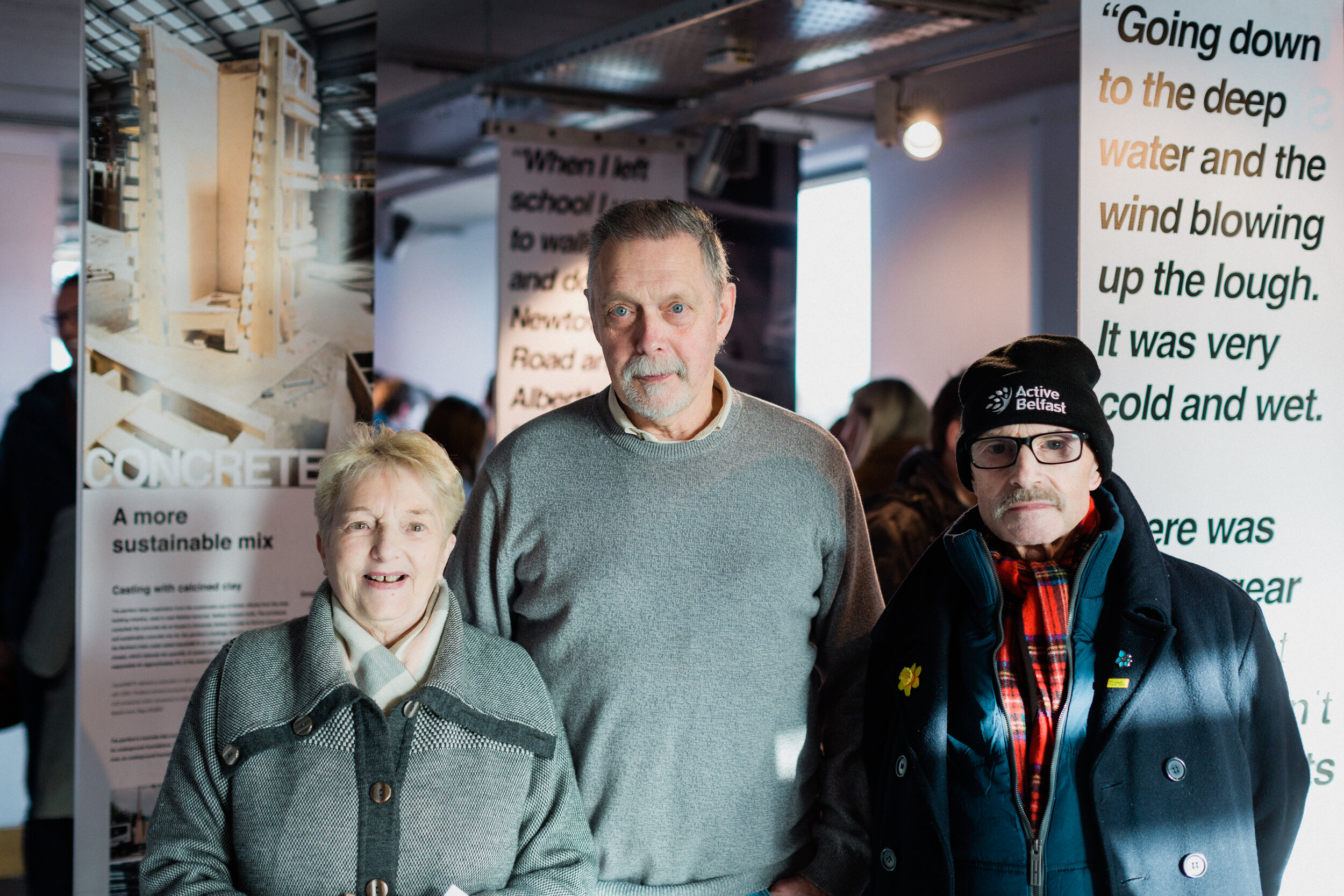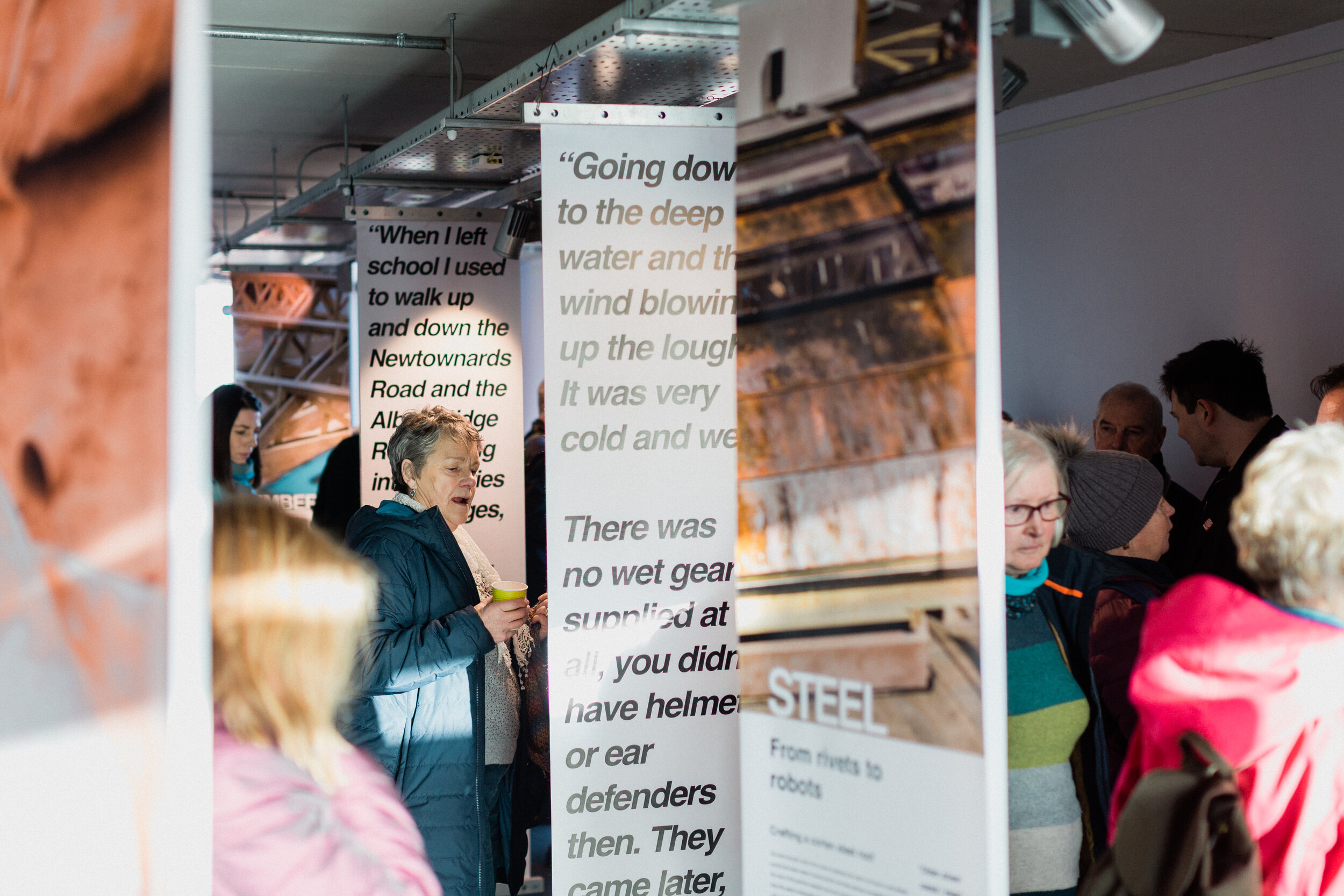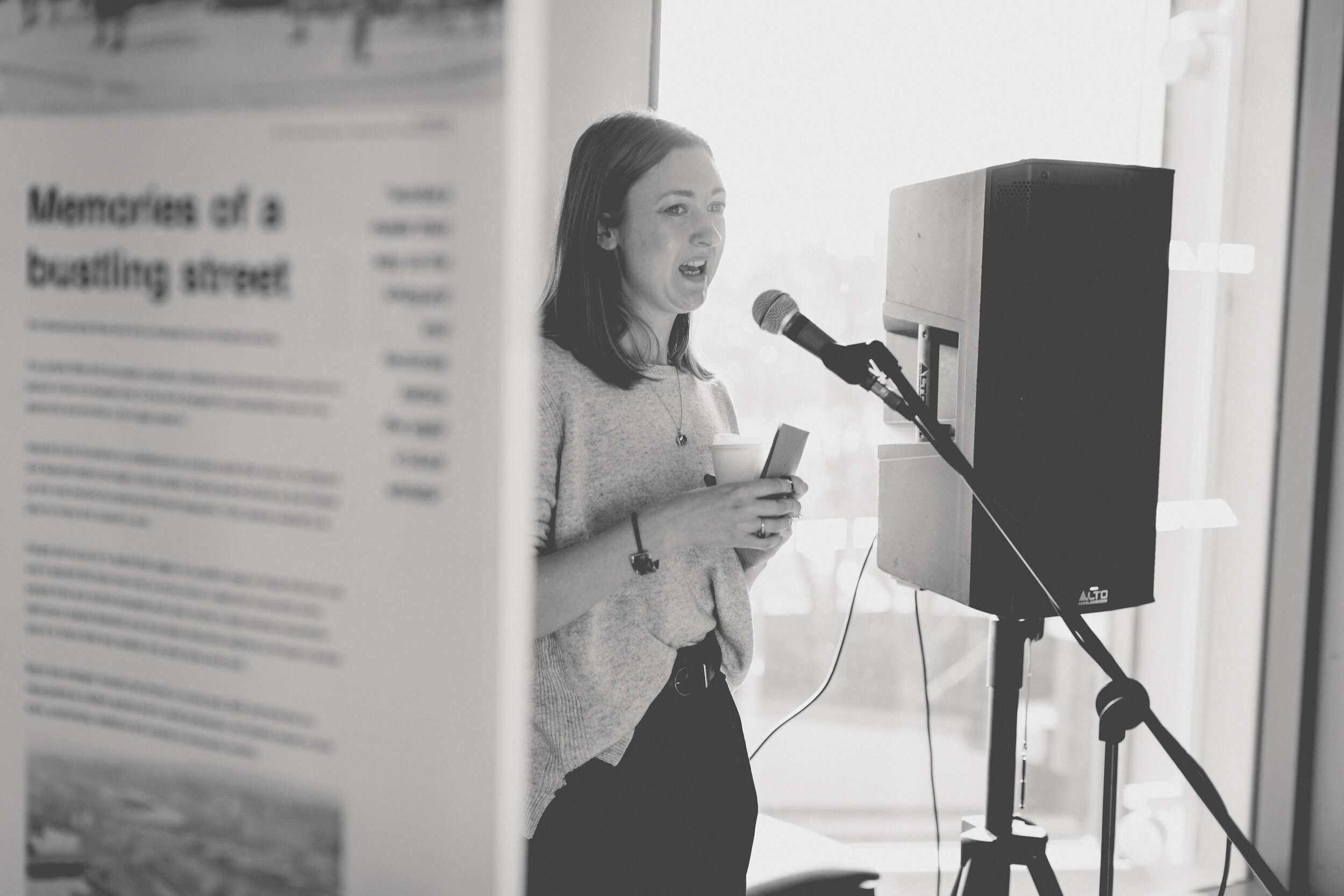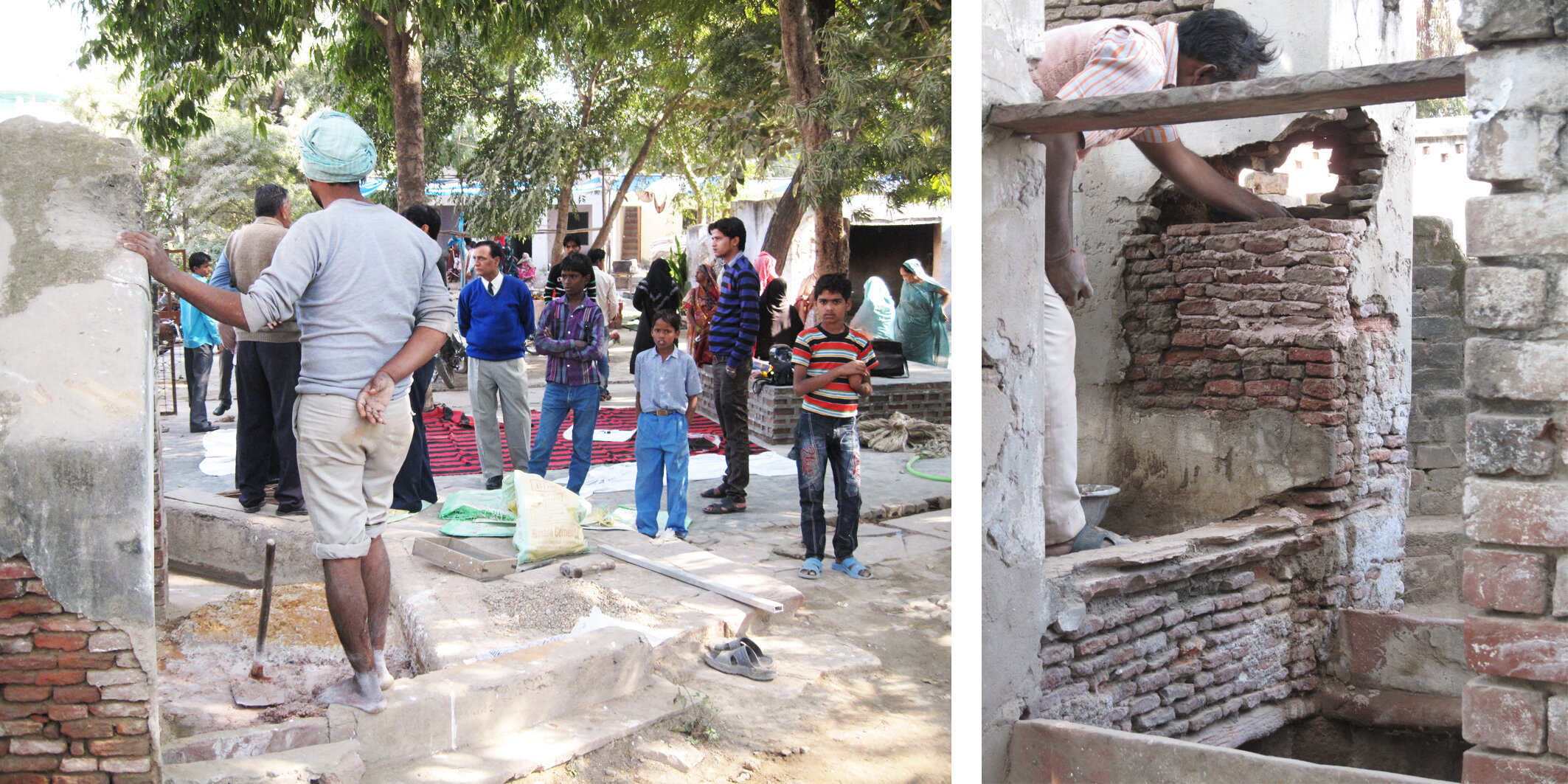Teaching and Research
Queen’s University students helping to construct the Built: East Pavilion
Teaching + Research
Through teaching and research, OGU continue to learn and improve. Both Chris and Rachel teach Architectural Design and Architectural Technology at Queen’s University Belfast.
Rachel completed a PhD by Project at London Metropolitan University, focussing on design work that she ran in north India in collaboration with the NGO CURE. She then joined the research group Recomposing the City - a group interested in the sonic environment of our cities, based in Belfast and Oxford, before becoming a part-time lecturer at Queen’s. Rachel’s research is primarily concerned with the potential of collaborative projects to provoke residents’ engagement with the architecture and planning of their neighbourhood.
Belfast Design Week: Blick Share Six
Reviews, Queen’s University Belfast
Built: East Exhibition and Oral Histories Project, in collaboration with EastSide Partnership
Research Project: The Buksh Museum of Hobbycraft
events, pavilion, restoration
This project explored the claims made by architectural heritage on the urban order and investigated how architects might better contribute to practices of heritage conservation. There were conflicting opinions among residents, historians, academics and municipal authorities as to which parts of Tajganj, North India qualified as architectural heritage, and how they should be conserved. At the time, there was no effective institution for constructively negotiating these views. The only methods of heritage identification and repair carried out by the government reinforced an attitude to conservation inherited from the European preservationist movement: a centralised, monument-focused approach that contributed to the destruction of small-scale, resident-led practices of maintenance.
Outside of the government’s programme of monument protection, development practitioners in India have embraced certain types of conservation project which are perceived to benefit residents in run-down, historic neighbourhoods: guided walks, ‘heritage houses’, and the ‘revival’ of traditional crafts are often intended to introduce a tourism economy to low-income areas. This project was part of a wider body of research carried out in collaboration with a group of residents, NGO workers and local craftspeople to critically reinvent these familiar conservation motifs through architectural making.
A portfolio of drawings presented alongside the text was made during the process to clarify and develop the views towards conservation that emerged. The research demonstrated that civic engagement in Tajganj relies on an inherited order of architectural settings through which recent memories, accounts left by previous generations, and the conception of a shared past reaching beyond material remains influence the way that urban places are reimagined and developed.
Links to Selected Research:
